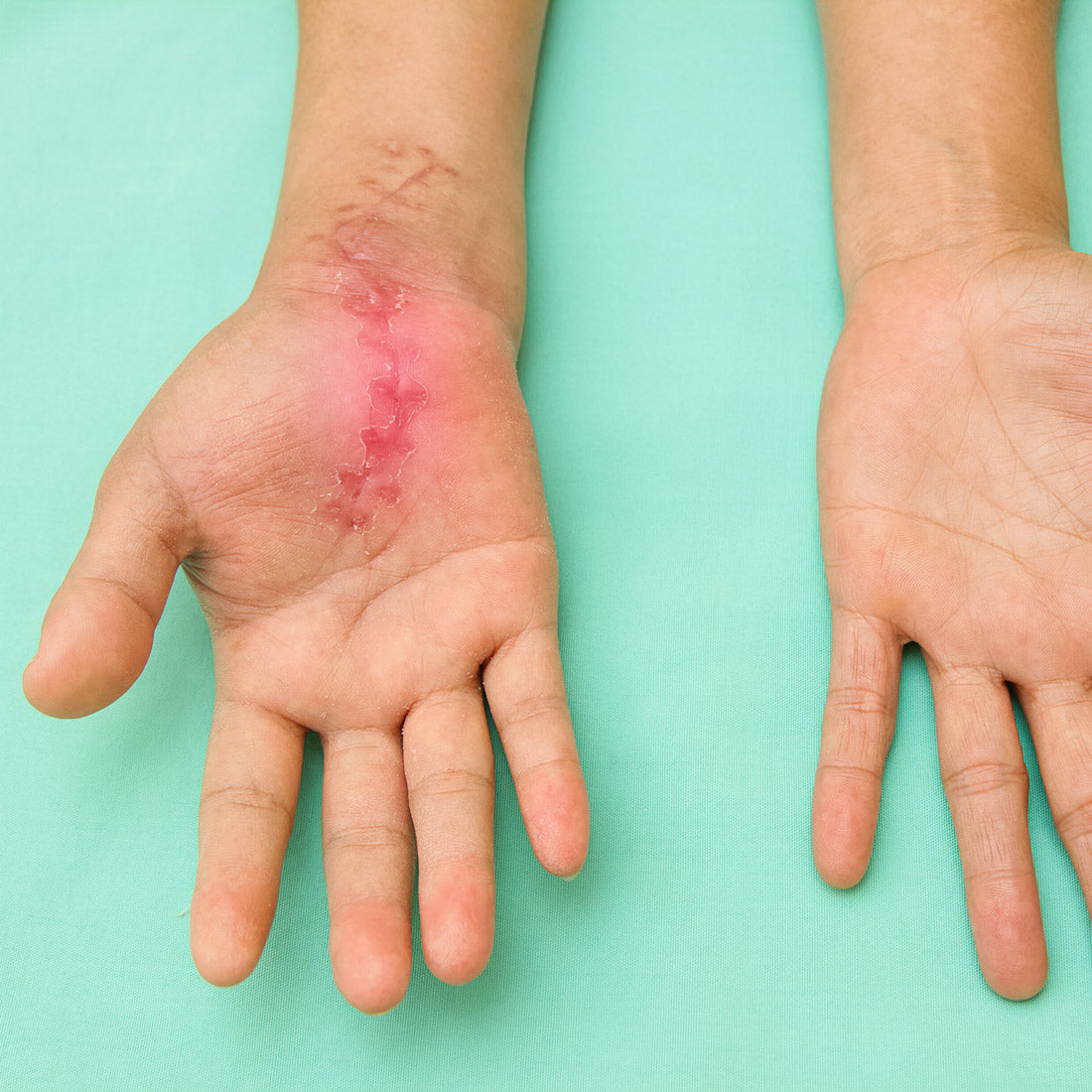Love them or hate them, scars are something we all manage to collect throughout our lifetime. They’re life’s little reminders of incidents, and accidents we have suffered over the years. If we are lucky, we might have a good story behind some of our scars. For others, scars can be a deep-seated reminder of a traumatic experience. The good news is there are ways to help reduce and even eliminate the appearance of scar tissue. We are going to look at some of the science behind what causes scars, the different types of scars that exist and some of our own organic scar treatments that can help reduce the appearance and severity of scars.
Scars can occur when the body experiences significant wounds and/or injuries. Cuts, scrapes, incisions, broken bones and impacts can all leave scars. When the skin is broken, the natural healing ability of our bodies replaces that skin with thick, fibrous tissue we know as scars. Most scars are relatively minor and can fade away on their own overtime. More serious injuries can leave long lasting marks. Scars appearing in highly visible areas of the body, such as the face, neck, arms or legs can often carry psychological effects.
Scar tissue itself is composed of a protein called collagen. Collagen is one of many proteins that makeup the skin in your body, but when an injury occurs that damages and breaks the skin, the body regenerates this fibrous collagen to heal the wound. This typically manifests in a thick, raised alignment of the skin, with a texture unlike the surrounding areas. Essentially, the scarring process sews your skin back together to close the wound, leaving the scar as a visible reminder of the damage caused. It may take weeks or even months for the scar to fully form. During this time, blood flow increases as collagen continues to build up, causing the scar to appear red and lumpy. Over time, the scar will typically flatten out and become pale. The collagen that produced the scar is not quite the same as the collagen that produced your skin, leaving hair follicles and sweat glands unable to grow back with scar tissue.
Types of Scars
There are many different types of scars. These include keloid scars, contractures scars, hypertrophic scars, atrophic acne and stretch marks.
Keloid Scars
Keloid scars result from an overproduction of collagen during the scarring process. This results in a hard, smooth growth at the site of the injury that can often appear much larger than the original wound. Keloids can be itchy and even painful, continuing to grow long after the wound itself has healed. While keloid scars may continue to grow in a tumorous fashion, they are not cancerous and not overtly dangerous. Aside from the slight discomfort, they are primarily a cosmetic issue. Keloid scars are most commonly found on individuals with dark skin.
Hypertrophic Scars
Similar to keloids, hypertrophic scars also result from an overproduction of collagen during the healing process. However, they are distinguished by hypertrophic scar’s inability to grow larger than the original wounded area of skin. They are commonly manifested as red, raised protrusions of the skin along the healed area. They may continue to thicken for several months after the wound is healed but will eventually flatten and become pale over time.
Atrophic Acne
Commonly known as pitted scars, atrophic acne is an indentation of the skin formed from when the scar heals below the tissue, unable to replace the fat or muscle tissue that was damaged. This type of scarring is most commonly associated with severe acne but can also result from chickenpox or other similar diseases.
Contracture Scars
This is a serious form of scaring that is the result of 2nd or 3rd degree skin burns. For victims that have suffered severe burns, the skin grows back in a tightened, contracted form. This tightened skin can affect movement, restricting the muscles and nerves under the skin.
Stretch Marks
Medically known as striae, stretch marks are the result of a rapid expansion of skin tissue. They can occur as a result of pregnancy or significant weight gain. Stretch marks appear as discolored lines or grooves in your skin, commonly appearing on the stomach, arms, chest or other areas prone to weight gain.
Treatments for Scarring
Depending on the type and severity of scarring, there are many treatments available. Options include cosmetic surgery, dermatological procedures, injections and topical treatments among others.

What Causes Scars?
By Dr. Peter Klapper Ph.D.

